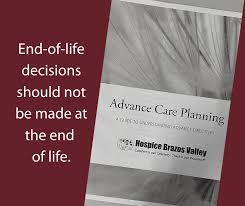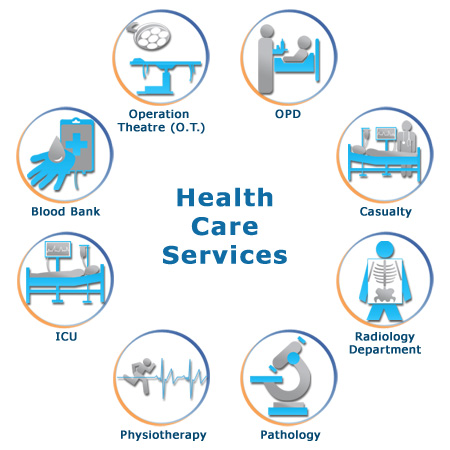
Earlier this year, the Centers for Medicare & Medicaid Services (CMS) launched a new Hospice Compare website that will make it easier for patients, families, and other interested parties to compare hospice providers. The website is intended for consumers to better understand hospice care, and encourage them take part in care decisions. It is also designed to put more pressure on hospices to provide high-quality service.
The Hospice Compare website is built from information provided by 3,876 hospices. This website contains the Hospice Item Set quality measures results. It provides a snapshot of quality hospice care. The website offers a search option that allows users to search by name, zipcode, or any other criteria. It also lists providers who are at risk of being terminated by Medicare. You will also find information on hospices which provide services to patients who have a prognosis that is less than six-months.

The Hospice Item Set (HIS), quality measures, are based on results from the Hospice Consumer Assessment of Healthcare Providers and Systems survey. The CAHPS survey includes questions about pain and symptom management, patient communication, nursing routines, and coverage. Also, certified independent evaluators conduct caregiver surveys. Hospice Compare is created using the CAHPS survey results. It will include seven HIS measurements, dating back from October 2015 to September 2016. It will not be possible to report the results of CAHPS Hospice Survey until early CY2018.
The Hospice Compare website is designed to be easy to use, so providers can get the information they need to make informed decisions about care. It is optimized for mobile usage and follows industry best practices when it comes to consumer-facing websites. Hospice Compare's website is not always up-to-date. It will take some time for the data changes to be reflected in real-time. CMS is currently testing several measures and will continue to improve Hospice Compare.
Providers will be able to access preview reports on the Hospice Item Set data via the Hospice Compare website. Providers will need to submit inactivation and modification records to HIS before the 4.5 month data correction deadline. These preview reports can be accessed via the CASPER app. A provider who has viewed a preview report can view the data for a quarter-yearly basis. After 60 days, providers won't be able access the data.
You can also sign up for the newsletter on the website. The Friends of Hospice newsletter goes out to hospice providers and others who are interested in the subject. It provides information about current research, as well articles on the end-of-life. It also has educational materials for patients, families, and caregivers. It also includes a listing of local hospices.

Hospice Compare has recently been updated to include the results of the CAHPS Hospice Survey. This includes a new measure called "Hospice Visits when Death is Imminent." This three-day measure measures the percentage of patients who receive at least one visit during the last three days of life. It has a fact sheet and Q&A document associated with the measure.
FAQ
What is my role in public health?
Participating in preventive efforts can help to protect your own health and that of others. You can also help improve public health by reporting illnesses and injuries to health professionals so they can take action to prevent future cases.
What is the point of medical systems?
People living in developing countries often lack basic health care facilities. Many of these people die from infectious diseases such as tuberculosis and malaria before they reach middle age.
In developed countries, most people get routine checkups and visit their general practitioners for minor illnesses. Many people are still suffering from chronic diseases like heart disease and diabetes.
What role does the private sector play?
Private sector plays a crucial role in healthcare delivery. The private sector provides some equipment for hospitals.
It pays some staff who work in hospitals. It makes sense that they should be involved in the management of the system.
However, they have limitations.
It is impossible for private providers to be competitive with services provided by the government.
They should not try to run the whole thing. This could mean that the system doesn't deliver good value for money.
What's the difference between public health and health policy?
Both terms refer to the decisions made or legislated by policymakers in order to improve how we deliver our health services. The decision to build a hospital can be made locally, nationally, or regionally. The same goes for the decision whether to require employers provide health insurance. This can be done by local, national or regional officials.
Statistics
- For the most part, that's true—over 80 percent of patients are over the age of 65. (rasmussen.edu)
- Consuming over 10 percent of [3] (en.wikipedia.org)
- For instance, Chinese hospital charges tend toward 50% for drugs, another major percentage for equipment, and a small percentage for healthcare professional fees. (en.wikipedia.org)
- Healthcare Occupations PRINTER-FRIENDLY Employment in healthcare occupations is projected to grow 16 percent from 2020 to 2030, much faster than the average for all occupations, adding about 2.6 million new jobs. (bls.gov)
- Over the first twenty-five years of this transformation, government contributions to healthcare expenditures have dropped from 36% to 15%, with the burden of managing this decrease falling largely on patients. (en.wikipedia.org)
External Links
How To
How to Locate Home Care Facilities
People who need assistance at home are assisted by home care facilities. This includes elderly people who do not want to leave their homes, disabled people who cannot move around independently, and those who suffer from chronic illnesses such as Alzheimer's disease. These facilities provide services like personal hygiene, meal preparations, laundry, cleaning and medication reminders. They also offer transportation. They often work with rehabilitation specialists, social workers and medical professionals.
The best way to find a home care service provider is through recommendations from friends, family members, local businesses, or online reviews. After you've identified one or two providers you can start to ask about their qualifications, experience, and references. Look for providers that offer flexible hours to accommodate your needs. Also, check if they offer 24/7 emergency response.
It might be worth asking your doctor/nurse for referrals. You can search online for "home care" or "nursing homes" if you aren't sure where to look. You can use websites like Yelp and Angie's List or HealthGrades to compare nursing homes.
To get more information, call your local Area Agency on Aging and Visiting Nurse Service Association. These agencies will have a list that lists local agencies that provide home care services.
Many home care agencies charge high rates for their services. This makes it important to find the right agency. In fact, some agencies charge up to 100% of a patient's income! Avoid this problem by selecting an agency that has been highly reviewed by the Better Business Bureau. Get references from past clients.
Some states even require homecare agencies that register with the State Department of Social Services. You can check with your local government to find out which agency registration requirements apply.
There are many things you need to remember when selecting a Home Care Agency:
-
Be wary of any company that asks you to pay upfront before receiving services.
-
Look for a reputable and well-established business.
-
Get proof of insurance, especially if you're paying out of pocket.
-
You should ensure that the state licenses any agency you hire.
-
Get a written contract that outlines all costs involved with hiring an agency.
-
Confirm that there are follow-up visits by the agency following your discharge.
-
Ask for a list or certifications.
-
Don't sign anything until you have read it.
-
Read any fine print carefully.
-
Check if the agency is bonded and insured.
-
Ask how long the agency is in operation.
-
Verify that the State Department of Social Welfare has licensed the agency.
-
Find out if complaints have been filed against the agency.
-
Contact your local government office that regulates home-care agencies.
-
It is important to ensure that staff members answering the phones are qualified to answer any questions you may have about homecare.
-
Contact your attorney or accountant to ensure you understand the tax implications of using home care.
-
Always obtain at least three quotes for every agency providing home care services.
-
Do not accept a lower bid than the best, but at least $30 per hour.
-
You may have to pay multiple visits to a home-care agency every day.
-
It is important to carefully read contracts before you sign them.